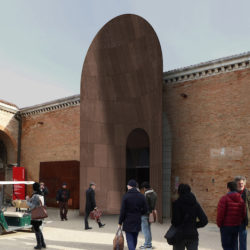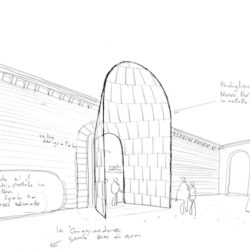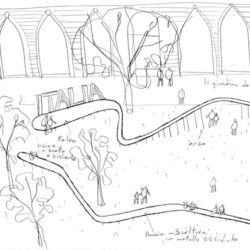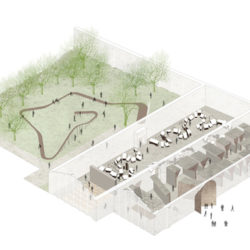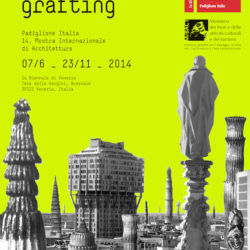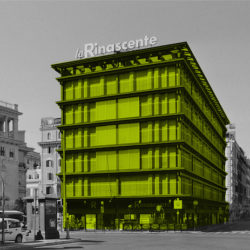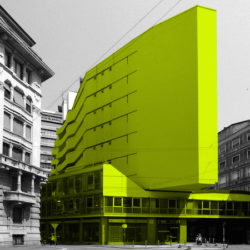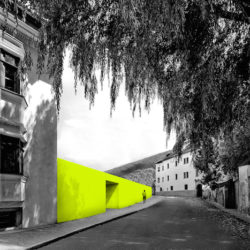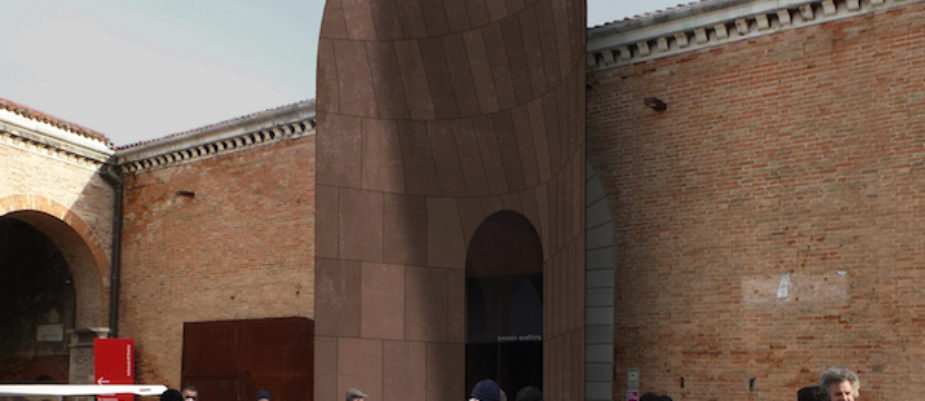
You cannot fully understand the quality of Cino Zucchi’s design for Italian Pavillion ”Innesti/Grafting” at 14th International Architecture Biennale in Venice without bearing its interpretation in mind, expressed through the graft metaphor that, namely the grafting made in botany on the existing plant to germinate new variants.
Grafting, as Cino Zucchi stressed, is a good metaphor also for the way the theme of the Italian Pavillion germinates from Rem Koolhas’s theme “Absorbing Modernity 1914-2014”.
A methaphor, that becomes the leit-motif of the expository order of Italian Pavillion, mostly devoted to Milan and to the modern architecture “grafting” in its historic areas. The examples especially stress the traumatic yet vital aspect of the grafting of modern architecture on the historic fabric of the city. Through cuts, breaks, demolitions (the projects for Piazza Duomo, for example) eventually absorbed by the original fabric, but even through attempts of re-establishing the relation with the old fabric (projects by Bottoni, Moretti, Caccia Dominioni…). Mostly positive examples, showing that you should have a clear objective but also know and respect the plant one is working on.
Text by Giorgio Origlia.
Captions
1,2, The Archimbuto Portal: a contemporary graft. Cino Zucchi, curator of the Italian Pavilion on commission from MIBACT, has designed a large portal made of acid-finished Cor-ten steel, built and sponsored by De Castelli. The portal, affectionately nicknamed “Archimbuto”, the ‘Archi-funnel’, because of its shape which harmonizes with the existing space and welcomes the visitors to the exhibition, enhances the expressive potential of the metal, thanks to the development of a special finish that highlights the typical colour range of steel (from gray to brown to blue).
Anchored to a cement platform, consisting in 163 panels for a total height of 10 meters and weighing 6 tons, the portal thus is also an explicit materialization of the title of the exhibition: ‘grafting’ contemporary creativity onto the ancient and beautiful spaces of the Arsenale, it is also a ‘link’ between inside and outside, the public dimension of the visitor itineraries and the more sheltered and reflexive enjoyment of the exhibition.
This project marks yet another step forward in the excellent understanding between the architect from Milan and the company founded in the Veneto region, which began two years ago with the installation ‘Copycat. Empathy and Envy as form-makers’ created for the 13th Architecture Biennale, the only Italian project that won an Honourable Mention from the international jury of the Exhibition.
3, On the occasion of Biennale, De Castelli is also sponsor of the long size snake-bench by Lavazza installed at Giardino delle Vergini at Arsenale, Venice.
4, General layout of Italian Pavillion at 14th Biennale Venice.
5, Poster Innesti/Grafting.
6, Franco Albini, Franca Helg, La Rinascente, Roma 1957-1961 © CZA.
7, Luigi Moretti, Edificio in Corso Italia, Milano 1949-1955 © CZA.
8, Barozzi / Veiga, Scuola di musica, Brunico (BZ) 2012 © Estudio Barozzi/Veiga.

